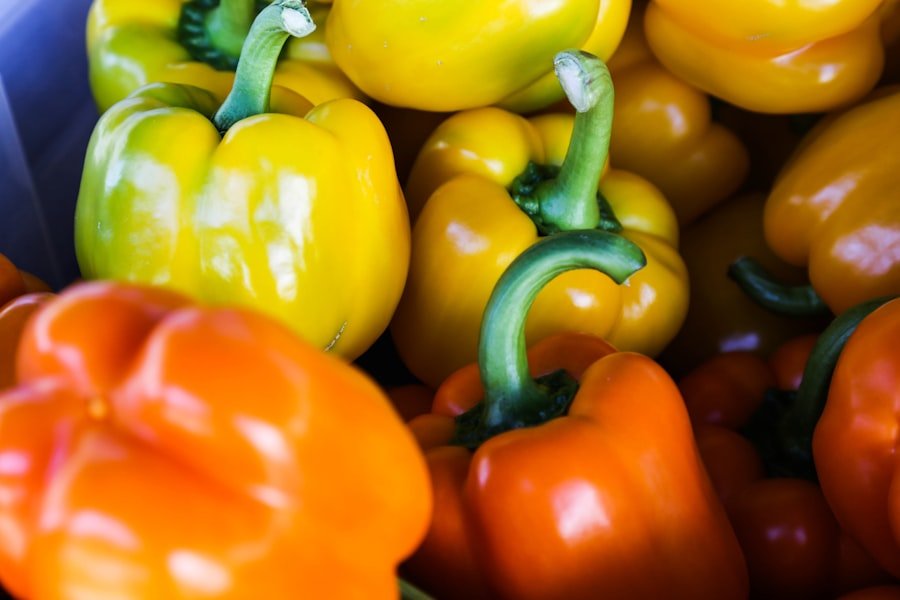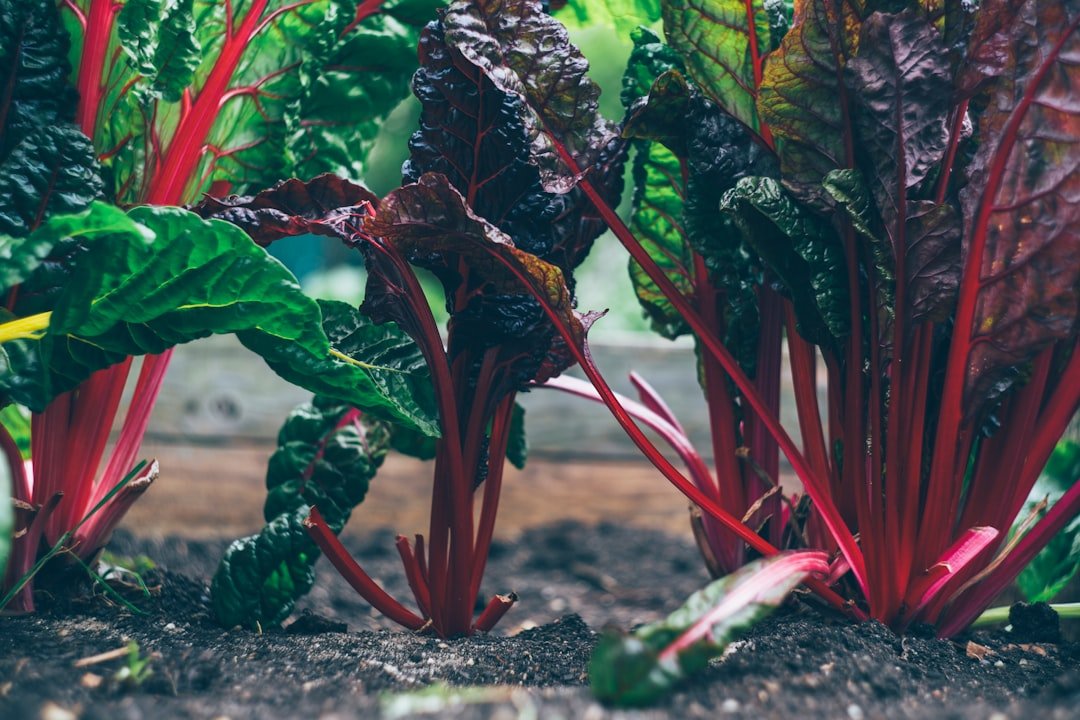This post may contain affiliate links. When you purchase through links on our site, we may earn an affiliate commission.
As I delve into the world of culinary arts, I find myself increasingly captivated by the concept of root-to-stem cooking. This approach emphasizes the use of every part of a vegetable, from its roots to its leaves, thereby minimizing waste and maximizing flavor. Root-to-stem cooking is not merely a trend; it is a philosophy that encourages a deeper connection with our food and a more sustainable way of living.
By embracing this method, I can transform my kitchen into a space where creativity flourishes, and every ingredient is valued. The beauty of root-to-stem cooking lies in its versatility. It invites me to explore the often-overlooked parts of vegetables that can add unique flavors and textures to my dishes.
For instance, while I may be accustomed to using carrots primarily for their roots, I can also incorporate their greens into salads or pestos. This holistic approach not only enhances my culinary repertoire but also fosters a sense of responsibility towards the environment. As I embark on this journey, I am excited to discover new ways to celebrate the bounty of nature while reducing my ecological footprint.
Key Takeaways
- Root-to-stem cooking is a sustainable approach that utilizes the entire vegetable, reducing food waste and maximizing nutrition.
- When selecting and preparing root vegetables, look for firm, unblemished produce and consider using the leaves and stalks as well.
- Vegetable stalks and leaves can be utilized in soups, stews, and salads to add flavor, texture, and nutrition to dishes.
- Get creative with root-to-stem cooking by incorporating vegetable parts into recipes such as pesto, pickles, and stir-fries for added depth of flavor.
- Embracing root-to-stem cooking not only reduces food waste but also provides a wealth of nutrients and flavors for a more sustainable and delicious culinary experience.
Selecting and Preparing Root Vegetables
When it comes to selecting root vegetables, I have learned that freshness is key. I often visit local farmers’ markets or grocery stores that prioritize seasonal produce. The vibrant colors and firm textures of freshly harvested root vegetables like carrots, beets, and turnips are hard to resist.
As I pick them up, I can feel the earthiness that connects me to the soil from which they came. I pay close attention to their appearance; blemishes or soft spots can indicate age or poor quality. Choosing organic options whenever possible also aligns with my commitment to sustainability.
Once I have gathered my root vegetables, the preparation process becomes an exciting adventure. I wash them thoroughly to remove any dirt, as I want to preserve their natural flavors. Peeling is often unnecessary for many root vegetables, as their skins can be rich in nutrients and add texture to my dishes.
For instance, I enjoy roasting unpeeled potatoes and sweet potatoes, allowing their skins to crisp up beautifully in the oven. As I chop and dice these vegetables, I take care to save any trimmings or peels, knowing that they can be repurposed in various ways.
Utilizing Vegetable Stalks and Leaves

In my exploration of root-to-stem cooking, I have discovered the incredible potential of vegetable stalks and leaves. Often discarded without a second thought, these parts can elevate my dishes in unexpected ways. For example, the stalks of broccoli are not only edible but also packed with flavor and nutrients.
When I steam or sauté them alongside the florets, they create a harmonious blend of textures that enhances the overall dish. Similarly, the leaves of beets can be sautéed with garlic and olive oil for a delicious side that rivals any traditional green. I have also found that incorporating vegetable leaves into my meals adds a fresh and vibrant element.
The greens of radishes, for instance, can be transformed into a zesty pesto or blended into smoothies for an extra nutrient boost. By embracing these often-overlooked parts of vegetables, I not only reduce waste but also expand my culinary horizons. Each time I experiment with stalks and leaves, I am reminded that there is so much more to explore beyond the familiar roots.
Creative Ways to Incorporate Root-to-Stem Cooking in Recipes
| Recipe | Root-to-Stem Ingredient Used | Benefits |
|---|---|---|
| Carrot Top Pesto | Carrot tops | Rich in vitamins and adds a fresh flavor |
| Broccoli Stem Slaw | Broccoli stems | Reduces food waste and provides crunch |
| Beet Greens Stir-Fry | Beet greens | High in nutrients and adds a colorful element |
| Potato Peel Chips | Potato peels | Crunchy snack and reduces waste |
As I continue to embrace root-to-stem cooking, I find myself constantly seeking creative ways to incorporate this philosophy into my recipes. One of my favorite methods is to create hearty soups and stews that utilize every part of the vegetable. For instance, I might start with a base of chopped onions and garlic, then add diced carrots and parsnips along with their greens for added flavor.
The result is a comforting dish that showcases the depth of flavors derived from using the entire vegetable. Another exciting avenue I’ve explored is making vegetable stocks from scraps. Whenever I chop vegetables, I save the peels, stems, and any other trimmings in a bag in my freezer.
When I’m ready to make stock, I simply toss these scraps into a pot with water and simmer them for hours. The resulting broth is rich and flavorful, perfect for soups or risottos. This practice not only enhances my dishes but also reinforces my commitment to minimizing waste in the kitchen.
Benefits of Root-to-Stem Cooking for Nutrition
Root-to-stem cooking offers numerous benefits for nutrition that I have come to appreciate deeply. By utilizing every part of a vegetable, I am able to access a wider array of nutrients that might otherwise go unnoticed. For example, while the roots of carrots are well-known for their beta-carotene content, the greens are rich in vitamins A and K as well as antioxidants.
By incorporating both parts into my meals, I ensure that I’m getting a more balanced intake of essential nutrients. Moreover, this cooking method encourages me to diversify my diet. Instead of relying solely on familiar ingredients, I am inspired to experiment with different vegetables and their various parts.
This exploration not only keeps my meals exciting but also introduces me to new flavors and textures that enhance my overall culinary experience. As I embrace root-to-stem cooking, I find myself becoming more mindful of what I eat and how it nourishes my body.
Reducing Food Waste through Root-to-Stem Cooking

One of the most compelling reasons for adopting root-to-stem cooking is its potential to significantly reduce food waste. In a world where food waste is a pressing issue, this approach empowers me to make conscious choices in the kitchen. By utilizing every part of a vegetable, I am actively participating in a solution that benefits both the environment and my household budget.
Each time I repurpose vegetable scraps or incorporate overlooked parts into my meals, I feel a sense of accomplishment knowing that I’m contributing to a more sustainable food system. Additionally, this practice encourages me to be more resourceful in my cooking. Instead of discarding vegetable trimmings without a second thought, I now view them as opportunities for creativity.
Whether it’s turning carrot tops into pesto or using potato peels for crispy snacks, I’ve learned that there are countless ways to make the most out of what might otherwise be considered waste. This shift in mindset has not only reduced my kitchen waste but has also sparked joy in my cooking process.
Tips for Storing and Preserving Root Vegetable Parts
To fully embrace root-to-stem cooking, I’ve discovered that proper storage and preservation techniques are essential. When it comes to root vegetables, keeping them in a cool, dark place helps maintain their freshness for longer periods. I’ve found that storing them in breathable bags or containers allows for air circulation while preventing moisture buildup that could lead to spoilage.
For leafy greens or vegetable tops, wrapping them in damp paper towels before placing them in the refrigerator keeps them crisp and vibrant. In addition to proper storage methods, I’ve also explored various preservation techniques for vegetable scraps. Freezing is one of my go-to methods; by blanching vegetable trimmings before freezing them, I can retain their flavor and nutrients for future use.
This way, when I’m ready to make stock or incorporate them into dishes later on, they are readily available at my fingertips. By being intentional about how I store and preserve these parts of vegetables, I’m able to maximize their potential while minimizing waste.
Embracing Root-to-Stem Cooking for Flavor and Nutrition
As I reflect on my journey into root-to-stem cooking, I am filled with gratitude for the lessons it has taught me about flavor, nutrition, and sustainability. This approach has transformed not only how I cook but also how I view food as a whole. By embracing every part of a vegetable, I’ve discovered new dimensions of taste and texture that have enriched my culinary experiences.
Ultimately, root-to-stem cooking is about more than just reducing waste; it’s about fostering a deeper connection with our food and recognizing its inherent value. As I continue to explore this philosophy in my kitchen, I am excited about the endless possibilities it presents for creativity and nourishment. By embracing root-to-stem cooking, I am not only enhancing my meals but also contributing to a more sustainable future—one delicious dish at a time.
If you’re interested in Root-to-Stem Cooking, you may also enjoy reading about “Beautiful Festive Decor Ideas for Every Season” on A to Z Cozy Corner. This article offers creative and inspiring ways to decorate your home for different holidays and seasons, adding a cozy and welcoming touch to your living space. Check it out here.
FAQs
What is root-to-stem cooking?
Root-to-stem cooking is a culinary approach that focuses on using the entire fruit or vegetable, including the parts that are often discarded, such as the stems, leaves, and peels. This approach aims to minimize food waste and maximize the nutritional value of produce.
What are the benefits of root-to-stem cooking?
Root-to-stem cooking helps reduce food waste by utilizing parts of fruits and vegetables that are often discarded. It also maximizes the nutritional value of produce, as many of the nutrients are found in the parts that are typically thrown away. Additionally, it can save money by making the most of every part of the produce.
What are some examples of root-to-stem cooking?
Examples of root-to-stem cooking include using carrot tops to make pesto, turning vegetable peels into crispy snacks, and using broccoli stems in stir-fries or soups. Other examples include using herb stems to flavor stocks and using fruit peels to infuse flavor into drinks or vinegar.
How can I start incorporating root-to-stem cooking into my meals?
To start incorporating root-to-stem cooking into your meals, you can begin by saving vegetable scraps to make homemade stocks, using fruit peels to infuse flavor into water or vinegar, and experimenting with recipes that utilize the entire fruit or vegetable. You can also look for inspiration from cookbooks, online resources, and cooking shows that focus on reducing food waste.

 using WordPress and
using WordPress and 
No responses yet